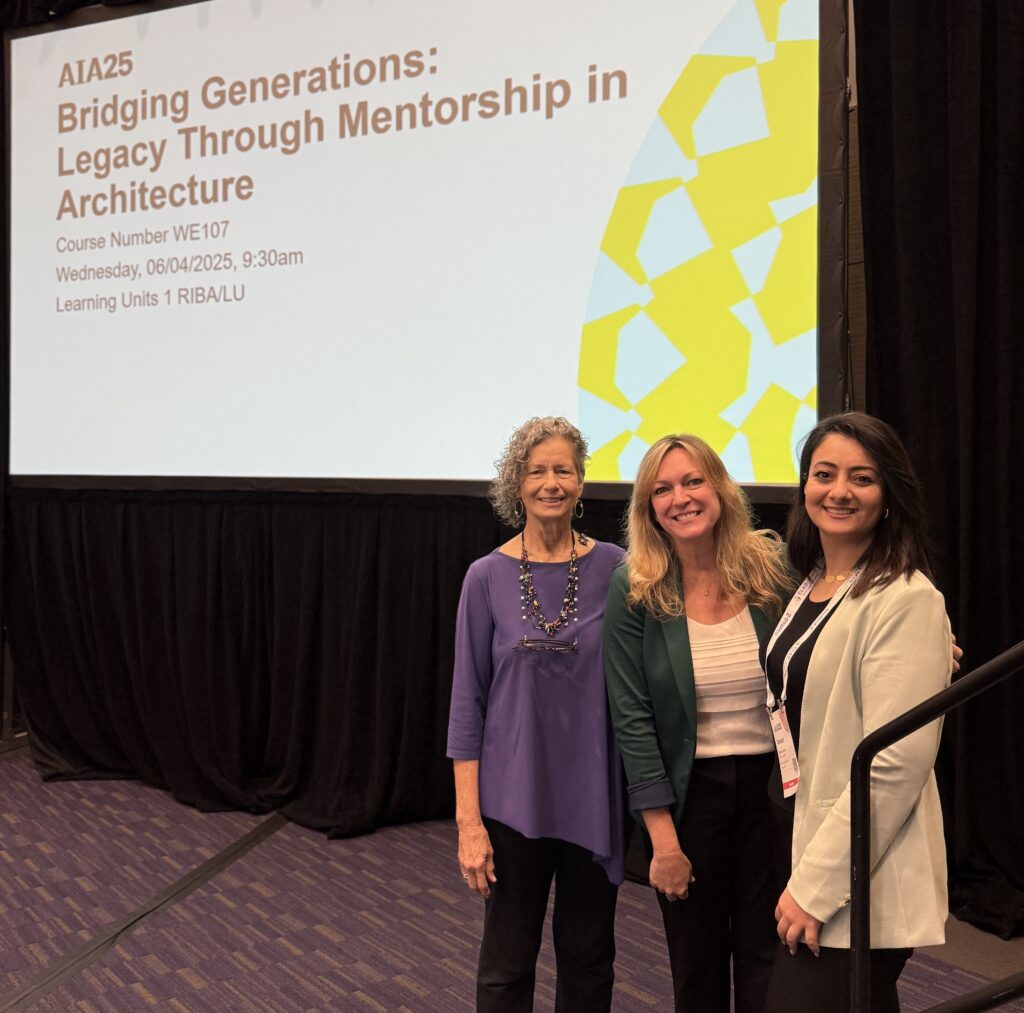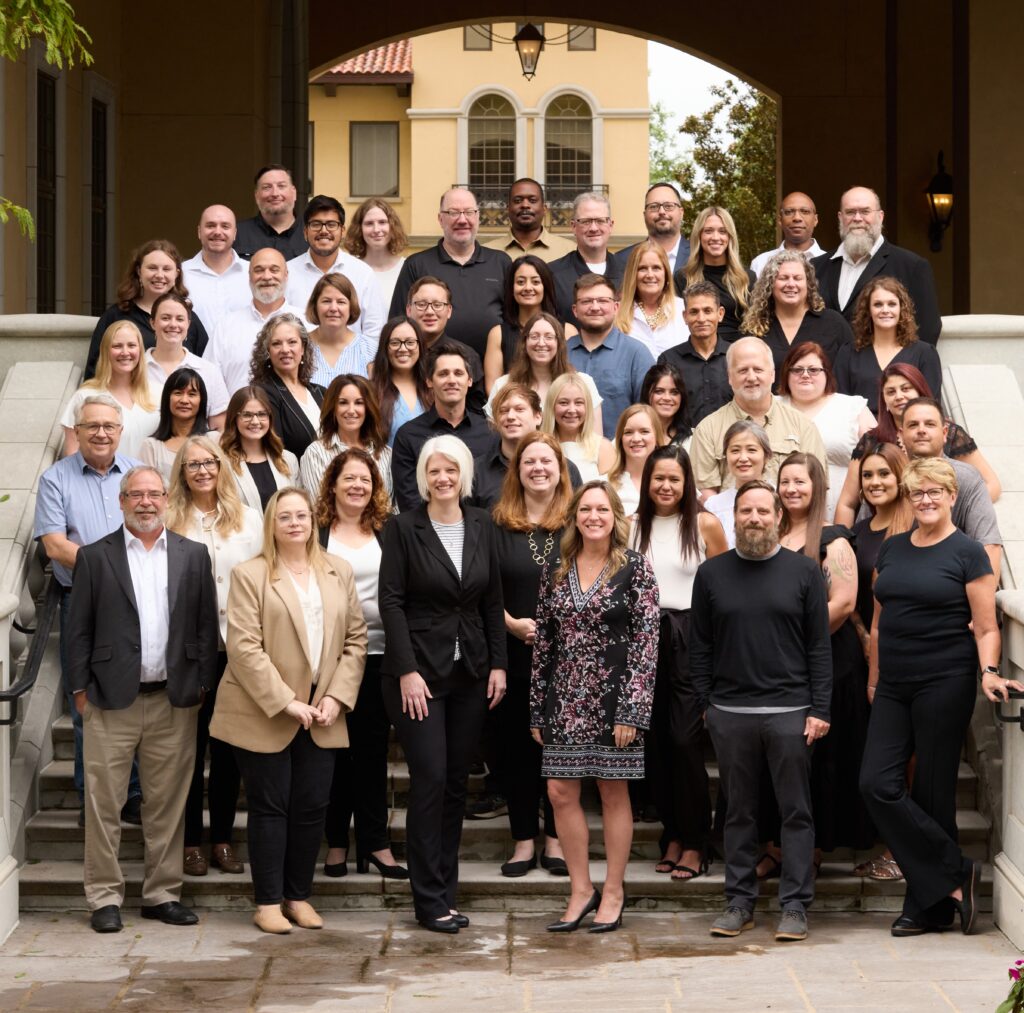Mentorship has long played a pivotal role in the development of architects — from the master builder-apprentice model to today’s more nuanced and varied forms of professional guidance. While the structure and delivery of mentorship may have evolved, its value remains unchanged. It is a foundational element of the profession and a critical mechanism for supporting emerging talent, sustaining firm culture, and ensuring the continuity of institutional knowledge.
As someone who experienced a pastiche of mentorship early in my career, I understand both the absence and the impact of mentorship. As a woman entering a male-dominated profession, I faced specific challenges — often being the only woman in the room and lacking models who reflected my own lived experience. Over time, however, I encountered people who saw my potential and offered not only guidance but presence. These relationships helped shape the leader I would become and ultimately informed how I now approach my role as CEO of a multidisciplinary architecture and design firm.

At the 2025 AIA Conference on Architecture & Design, I had the opportunity to co-present a session titled Legacy Through Mentorship with Pam Deatherage and Wanas Jasim. Our goal was to explore mentorship through a contemporary lens — recognizing that today’s workplace is multigenerational, increasingly diverse, and marked by rapid change. While we each brought different backgrounds to the table, we shared a common belief: mentorship is no longer a top-down, prescriptive practice. It is reciprocal, accessible, and adaptable. It reflects an understanding that mentorship is less about giving advice and more about fostering curiosity, offering support, and creating space for mutual growth.
Quantitative research reinforces the professional value of mentorship. A 2022 MentorcliQ study found that companies with mentoring programs had double the median profits of those without. Additional findings show that mentoring significantly improves engagement, retention, and performance — outcomes that are especially relevant to industries like architecture, which have historically struggled with high rates of attrition among emerging professionals. In fact, studies suggest that up to 50% of young architects leave the field within their first five years, often citing a lack of support and career development.
Despite the clear benefits, a significant gap persists between belief in mentorship and actual access to it. While 83% of Gen Z workers view workplace mentorship as important, only about half report having a mentor. This disconnect suggests not only an unmet need but also a missed opportunity for firms to actively shape and support the next generation of design professionals.
Our buildings may be the most visible expression of our work, but our greatest legacy will be the people we support and the careers we help shape.
Our research revealed a compelling insight: the benefits of mentorship were not only significant for mentees, but even more impactful for mentors. Those who participated as mentors reported increased confidence, fulfillment, and clarity in their own professional trajectories. This should serve as a reminder to all of us — no matter our title or experience level — that sharing our knowledge is not just generous, it is generative. Mentorship strengthens both sides of the relationship and, in doing so, strengthens the profession itself.
Mentorship in architecture need not be formal or long-term to be meaningful. It can emerge from relationships with professors, peers, clients, community members, or even those outside the discipline. Some of the most impactful mentorship experiences I’ve had came through small, thoughtful interactions— a question asked at the right time, a challenge offered with care, a moment of listening when it mattered most. The common denominator in all effective mentorship is intentionality.

Firms have a responsibility to create cultures where mentorship is not incidental but embedded in daily practice. At our firm, we aim to normalize feedback, encourage peer mentoring, and value intergenerational collaboration. We recognize that everyone, regardless of tenure or title, has something to teach and something to learn. That belief informs how we train, how we lead, and how we grow.
Building a mentorship culture does not require a complex program. It begins with modeling openness, being generous with time, asking thoughtful questions, and cultivating trust. It requires leaders to shift their mindset from expert to facilitator, and for emerging professionals to feel empowered to seek guidance without fear of judgment.
As architects, we are taught to design for the future — to anticipate how people will live, learn, and connect. In the same way, mentorship is an investment in that future. Our buildings may be the most visible expression of our work, but our greatest legacy will be the people we support and the careers we help shape. By embracing mentorship as an ongoing, relational practice, we not only elevate our profession — we ensure that it remains vital, inclusive, and resilient for generations to come.

